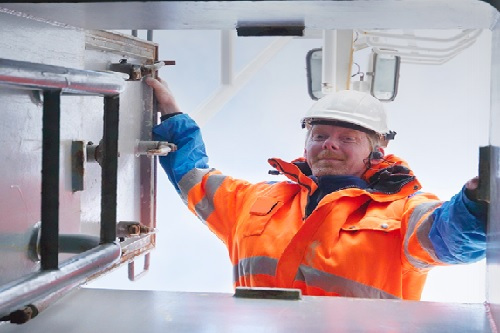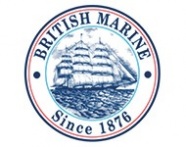How to avoid fatal accidents within enclosed spaces on board ships

Authored by British Marine
Incidents continue to occur, often fatally, within enclosed spaces on board ships. These incidents are avoidable, if the necessary safety precautions are observed.
The following note offers some guidance that should be followed when conducting enclosed space entry:
What is an enclosed space?
The International Maritime Organisation (IMO) defines an enclosed space as meeting any of the following characteristics:
- Limited openings for entry and exit;
- Inadequate ventilation; and
- Is not designed for continuous worker occupancy
It is not always obvious to ships staff what is an enclosed space or where a space can become an ‘enclosed space’; for example, if ventilation were to fail, or a piece of equipment were to leak. Almost anywhere that meets the above characteristics can be or become an enclosed space.
In addition to the above definition, new UK government legislation provides a useful list of examples of enclosed spaces, amongst much other information.
It is recommended that all owners actively identify the enclosed spaces on board their ships. Enclosed spaces should be clearly identified and all those on board made aware of these spaces. See below example of a clearly labelled space.
Is the space safe for entry?
Always check the atmosphere before entering!
The atmosphere of the space must be adequately tested by a competent person before entry. The following readings can be considered as the basic requirements:
- Oxygen 21.0% by volume
- Lower Flammable Limit < 1%
- Toxic vapours and gases <50% of the occupational exposure limit
Depending on the vessels trade, other specific hazards may have to be tested for – seek advice if you are unsure.
Consider what the space contains or has contained.
Frequent examples occur of ship’s crew being poisoned by fumigation gases. Cargo holds that have been fumigated, must be confirmed gas free before personnel enter the space.
Is the cargo an oxygen depleting substance? Know your cargo, brief your crew – minimise any entries to cargo holds.
Enclosed spaces must be isolated from sources of danger prior to any entry. When planning an entry, take time to identify the interconnections to the space.
Preparation for enclosed space entry
Enclosed space entry and rescue drills should be conducted at least every two months. This is an opportunity to properly educate ship’s crews about this hazardous activity. Time spent training will mitigate the potential of an incident to occur.
Working in the space
Various jobs are undertaken in enclosed spaces. Each have their own hazards, and a thorough risk assessment is necessary to identify the safeguards required. Conditions should be regularly monitored within the space. If a person in the work team feels unwell, then all should leave in a controlled manner.
Remember that working in an enclosed space will be more demanding than working in fresh air. It is likely that tasks will take longer. Take this into consideration when planning any work in an enclosed space. Avoid pressurising the personnel working within the space – rushing or taking short cuts is likely to result in an incident.
Conducting the Entry
Before entering, a permit to work must be fully completed.
Appoint a sentry. This must be someone who will not hesitate to raise the alarm – and who understands that they must not enter the space under any circumstances. An entry log must be maintained, to keep track of the exact number of people within the space.
It is also a sensible idea to list any equipment taken inside the space.
A toolbox talk should be conducted before entry with all involved personnel. The reporting frequency and the evacuation criteria should be clearly understood by all. Agree what will happen if communication is lost, or if the entry is taking place in a high noise environment.
Sufficient personal gas detectors should be provided for the entry team.
Maintain a safe atmosphere
Forced ventilation should be provided throughout the entry if possible.
Frequent atmosphere checks must be taken and logged. If any change from normal is noted, or any alarm condition occurs on the gas detector, all personnel must leave the space.
During work breaks a physical barrier must be put in place at the entrance, to prevent unauthorised entry. The atmosphere must be re-tested and logged before any person re-enters the space.
Ready for rescue?
A rescue team should be nominated and briefed in advance. They should be advised that the entry is taking place and should not be given any jobs that prevent them from being able to attend promptly in an emergency.
All necessary rescue equipment should be pre-prepared at the space entrance. Preparing for an incident will ensure that if help is needed, any delays are minimised.
Rescue necessary
If contact is lost, or if the sentry can see that someone has collapsed they must - RAISE THE ALARM and await assistance. They must not enter the space to attempt a rescue.
The rescue team must only enter wearing self-contained breathing apparatus (SCBA).
A frequent scenario that occurs during enclosed space entry incidents is when well-meaning crew members attempt to affect a rescue of a colleague in distress without any breathing apparatus. These rescuers then also become ill. This can result in multiple fatalities and crew members should be reminded of the need to override the reflexive instinct to help a friend or colleague.
The rescue of a person from a toxic or oxygen deficient atmosphere is an emergency. The rescued person will be extremely ill, and urgent medical advice will be required. Effective medical treatment, given promptly, can be the difference between a full recovery or death.
After Entry
Upon completion of the enclosed space entry, it is vitally important to ensure that all personnel are accounted for and that any equipment that was taken inside has been removed.
The space should be secured against re-entry and the permit cancelled promptly.
Consider de-briefing all personnel involved and encourage reporting of any lessons learned.
Enclosed space entry is an extremely hazardous operation. Don’t take chances – always test the atmosphere and always obtain a permit.
About British Marine
British Marine, as a global marine insurer, is the leading provider of Fixed Premium P&I and Hull and Machinery cover.
British Marine was founded in 1876, and since then, we have continuously provided cover to owners of small, medium-sized and specialist vessels, gaining a reputation for sector insight and expertise.
Today British Marine is the largest provider of commercial P&I insurance, offering limits of up to $1bn and Hull & Machinery to values of up to $25m, insuring in excess of 10,000 vessels worldwide. British Marine, as a wholly-owned subsidiary of the QBE Insurance Group, one of the world's leading A+ rated multinational insurance companies, we are able to provide the financial strength and security to deliver first-class underwriting and claims service.
Our team of experienced claims handlers includes former members of International Group clubs, lawyers and master mariners. We have the knowledge and skill to mitigate risk and provide resilient claims support and service to Owners insured with British Marine.

